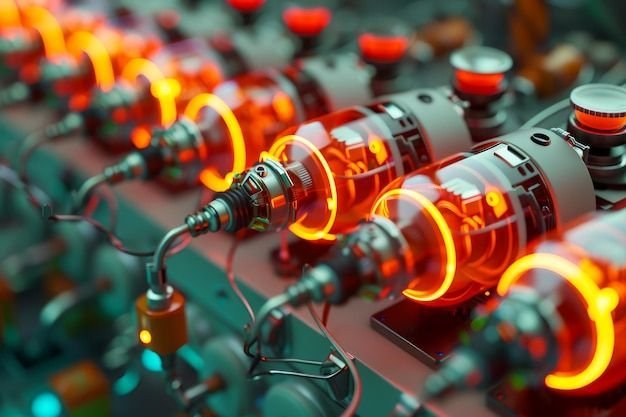Vacuum Technology
Exploring Vacuum Technology: Enhancing Efficiency and Precision
Vacuum technology plays a crucial role across various industries, from semiconductor manufacturing to space exploration. This article dives into the fundamentals of vacuum technology, its applications, advantages, and considerations.
#### What is Vacuum Technology?
Vacuum technology involves creating and maintaining a vacuum, a space devoid of matter, in a controlled environment. This technology finds extensive use in both industrial and scientific applications for its ability to manipulate materials and enhance process efficiency.
#### Applications of Vacuum Technology
Vacuum technology is indispensable in:
– **Semiconductor Manufacturing:** Used in the production of microchips and nanotechnology.
– **Space Simulation:** Essential for testing equipment in conditions mimicking outer space.
– **Medical Equipment:** Utilized in MRI machines and particle accelerators.
– **Packaging:** Ensures longer shelf life by removing air and reducing oxidation.
#### How Vacuum Systems Work
Vacuum systems operate by:
– **Pumping Mechanism:** Utilizes pumps to remove air and create a vacuum.
– **Pressure Control:** Maintains desired vacuum levels for specific applications.
– **Chamber Design:** Ensures leak-proof enclosures for efficient vacuum maintenance.
#### Advantages of Vacuum Technology
– **Precision:** Enables precise control over processes like deposition and etching.
– **Cleanliness:** Reduces contamination, crucial in sensitive manufacturing.
– **Versatility:** Applicable across diverse industries from aerospace to food packaging.
– **Efficiency:** Enhances energy efficiency by reducing friction and resistance.
#### Considerations and Challenges
– **Initial Investment:** High costs associated with equipment and maintenance.
– **Complexity:** Requires skilled personnel for operation and maintenance.
– **Environmental Impact:** Energy-intensive processes may have environmental implications.
#### Conclusion
Vacuum technology continues to evolve, driving innovation and efficiency in numerous industries. Its applications in manufacturing, research, and space exploration underscore its critical role in advancing technology and scientific discovery.
#### Frequently Asked Questions (FAQs)
**Q: What are the types of vacuum pumps used in vacuum technology?**
A: Common types include rotary vane pumps, turbomolecular pumps, and cryogenic pumps.
**Q: How is vacuum level measured?**
A: Vacuum levels are typically measured in units like Torr or Pascal using vacuum gauges.
**Q: What are the future trends in vacuum technology?**
A: Future advancements focus on increasing energy efficiency and reducing environmental impact through innovative pump designs and materials.













1 comment